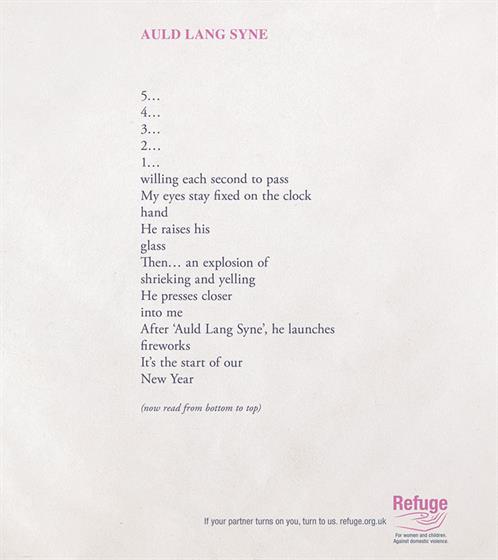If I may, I have an opposing opinion. While the photos showing the consequences are common and have been effective in the past, there are a couple good reasons to stop using them.
The first ties into the OP’s reasoning, that they’re cliche - but rather than just the desire to be different, it’s important to note that a lot of people tune that stuff out nowadays. Images of violence and the victims of unfortunate circumstances are so prevalent in both physical print and digital media that at this point people can’t be emotionally invested every time they see a photo of someone hurting, because otherwise they’d be emotionally exhausted. I actually remember reading something talking about it in detail, but I don’t remember if it was when I was in school or if it was a passing internet article. The point being that people are much more numb to that approach than they’ve been in the past.
The second is that bruised, battered, bleeding women is not what all, or even most abuse looks like. Since it’s stopped being acceptable to “discipline” your significant other, everyone gets concerned when someone shows up with a black eye or bloodied lip because they “fell down the stairs.” This also makes using them as a call to action less potent, because they already are for most people. But also, it means that physical abusers typically strike in other ways that aren’t as visible after the fact. A black eye or bloody lip is easy to spot and call out, but bruises on the legs, abdomen, or arms? Easily hidden inside clothes, and “falling down the stairs” is at least a more viable excuse. An abuser sees the photos of bloodied women telling people “this is bad!” and, being an awful person, decides that it’s fine as long as nobody can see what they’ve done.
What I like about this approach is that it’s not trying to show you what the consequences are for another person, it’s putting you in the shoes of right before something does happen, as an appeal to empathy for the fear rather than sympathy for the pain. I could tell you about how well the image of someone standing in the doorway, with the hallway light on behind them, staring into your dark room personally resonates with me, but, well, if you are an actual therapist I’d still have to pay you - but I can say that it is very on point with my experiences, to the point where it’s a bit hard to give it a fair critique.
I do think the figure could be refined a bit, maybe have the proportions exaggerated to increase the looming effect and drive the point home a little harder. I also think that, while this is a very good concept for conveying abuse in general, the design is supposed to be for day against violence against women specifically - and, as good as the concept of an abuser is portrayed, the absence of a representative of the victim means the role of the person is up in the air. The figure is masculine, but the relationship between them and the viewer/victim isn’t defined at all, which means they could be anyone - the parent, the child, a roommate, a lover - male or female. In that way, I do agree that it’s off target a bit, but it’s still a very strong concept at it’s core.


